Demolition Contractors Madison
Best Demolition Services in Madison
Receive up to 3 Demolition Experts quotes for your project today! Compare profiles, reviews, accreditations, portfolio, etc... and choose the best offer.
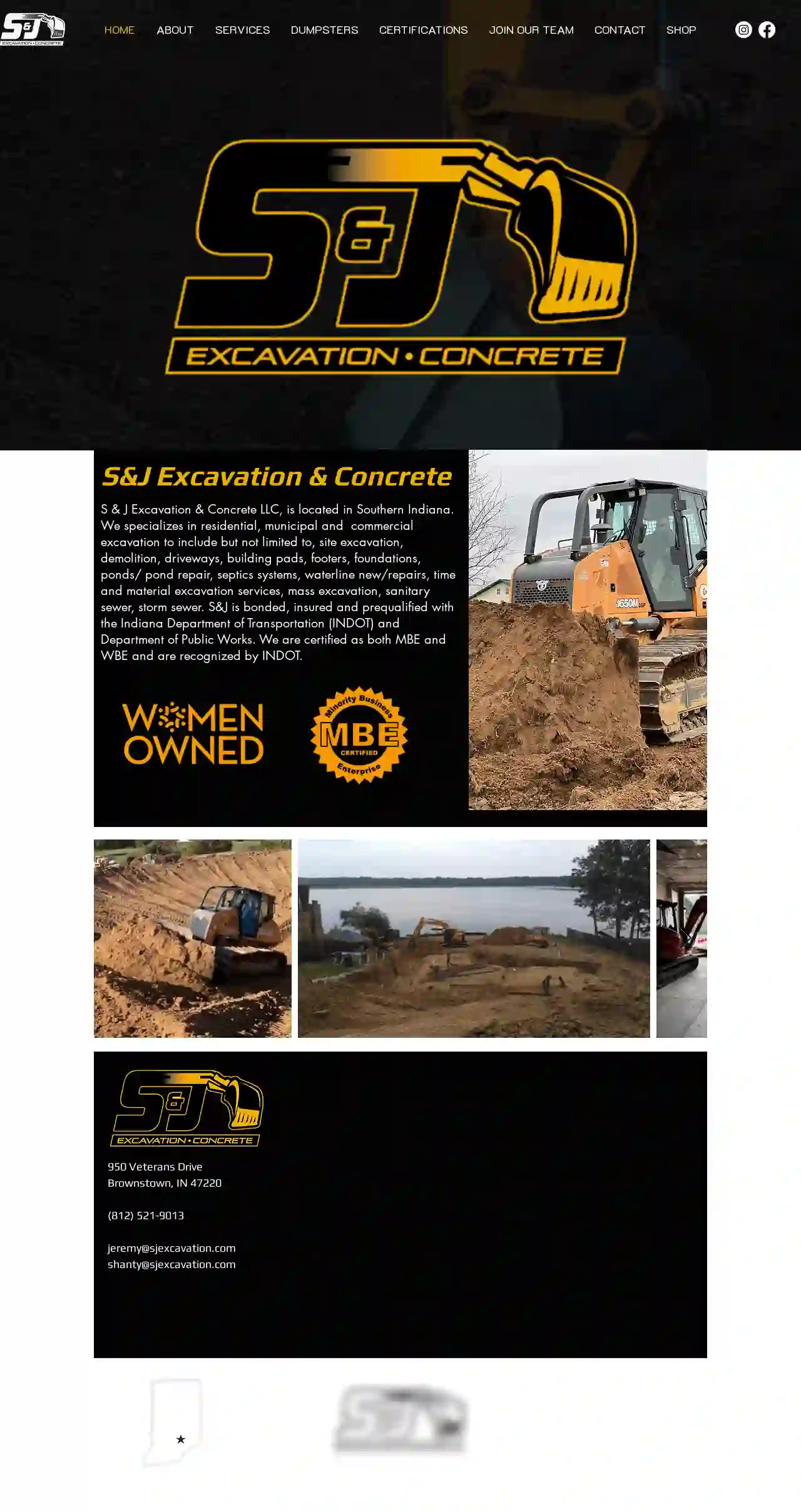
S & J EXCAVATION AND CONCRETE LLC
4.712 reviews950 Veterans Drive, Brownstown, 47220, USS&J Excavation & Concrete S & J Excavation & Concrete LLC, is located in Southern Indiana. We specialize in residential, municipal and commercial excavation to include but not limited to, site excavation, demolition, driveways, building pads, footers, foundations, ponds/ pond repair, septics systems, waterline new/repairs, time and material excavation services, mass excavation, sanitary sewer, storm sewer. S&J is bonded, insured and prequalified with the Indiana Department of Transportation (INDOT) and Department of Public Works. We are certified as both MBE and WBE and are recognized by INDOT.
- Services
- Why Us?
- Gallery
Get Quote
Valpo Excavation & Septic
1101 Cumberland Crossing Drive, Suite 223, 1101 Cumberland Crossing Drive Suite 223, Valparaiso, 46383, USValpo Excavation & Septic: Your Trusted Excavation Partner in Northwest Indiana At Valpo Excavation, we are dedicated to delivering exceptional service with every project. Our team boasts years of experience in professional excavation, grading, trenching, site preparation, septic installation & repairs, and a wide range of other services. We are equipped with the most reliable equipment and skilled professionals to handle any excavation, septic, and foundation needs. When you require groundwork in Northwest Indiana, we are your one-stop solution. We understand that site preparation is crucial for any construction project. We offer a comprehensive suite of services, from grading and trenching to foundation installation. Our team at Valpo Excavation & Septic has extensive experience in heavy construction and will execute your sitework with precision and efficiency. Valpo Excavation is a locally-owned and operated company founded by Russ Buechs, a man driven by the American Dream. Russ is a family-oriented businessman committed to providing a fulfilling life for his family. This dedication led him to establish this family-owned, faith-based company from the ground up. He built this company with honesty, trustworthiness, and integrity as core values. His mission is to provide solid foundations for every home and business throughout Northwest Indiana. From initial site preparation to the laying of foundations and utilities, Valpo Excavation can handle it all with expertise and reliability. For over 15 years, Russ has been a dedicated professional in heavy construction. He possesses experience in every stage of home building, from foundation work to gutter installation. Additionally, his multi-year mission work in Guatemala provided him with valuable experience in concrete pouring. Russ's diverse experience makes him highly knowledgeable and prepared to deliver exceptional results. At Valpo Excavation, we provide excavation services, sitework, clear cutting, trenching, land grading, flatwork, and foundation work for any home or business in Northwest Indiana. We collaborate with both contractors and individual homeowners or business owners. Whatever your excavation needs may be, we have the solution.
- Services
- Why Us?
- Gallery
Get Quote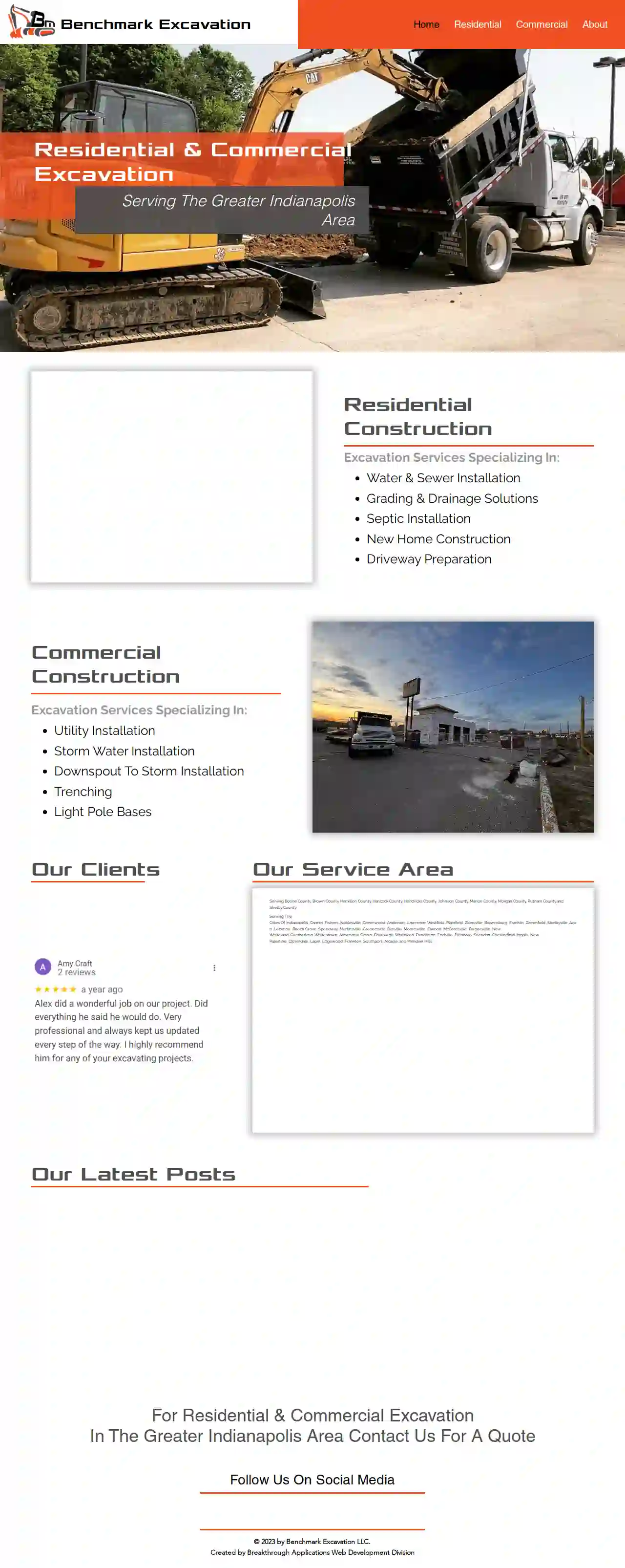
Benchmark Excavation LLC
517 reviewsIndianapolis, USBenchmark Excavation Serving Boone County, Brown County, Hamilton County, Hancock County, Hendricks County, Johnson County, Marion County, Morgan County, Putnam County, and Shelby County. Serving The Cities Of Indianapolis ,Carmel ,Fishers ,Noblesville ,Greenwood ,Anderson ,Lawrence ,Westfield ,Plainfield ,Zionsville ,Brownsburg ,Franklin ,Greenfield ,Shelbyville ,Avon ,Lebanon ,Beech Grove ,Speedway ,Martinsville ,Greencastle ,Danville ,Mooresville ,Elwood ,McCordsville ,Bargersville ,New Whiteland ,Cumberland ,Whitestown ,Alexandria ,Cicero ,Edinburgh ,Whiteland ,Pendleton ,Fortville ,Pittsboro ,Sheridan ,Chesterfield ,Ingalls ,New Palestine ,Cloverdale ,Lapel ,Edgewood ,Frankton ,Southport ,Arcadia ,and Meridian Hills. Our Clients Our Service Area Residential & Commercial Excavation Serving The Greater Indianapolis Area Contact Us Residential Construction Excavation Services Specializing In: Water & Sewer Installation Grading & Drainage Solutions Septic Installation New Home Construction Driveway Preparation Contact Us Today 1.310.703.4478 Commercial Construction Excavation Services Specializing In: Utility Installation Storm Water Installation Downspout To Storm Installation Trenching Light Pole Bases Contact Us Today 1.310.703.4478
- Services
- Why Us?
- Gallery
Get Quote
Brothers Excavating, LLC
51 reviewsIndianapolis, USAbout Brothers Excavating Brothers Excavating has the experience, the expertise, and the equipment to complete any size project from driveways to roads, drainage to erosion control, and yard grading to mass Excavation. Fully insured and bonded with more than 20 years in the business, Brothers Excavating is your on-time, on-target, and on-budget excavating contractor. We service a 75-mile radius, including: Indiana Terre Haute Indianapolis Lafayette Bloomington Vincennes Illinois Champaign Danville Effingham Mattoon Meet The Owner Don Bowers President – 30 years experience As a second-generation construction excavator, the desire to dig and build is in my bones. Couple that with an entrepreneurial spirit lead to the development of Brother’s Excavating with a goal to bring a professional and progressive approach to this industry with experience and the latest technology. Furthermore, I measure success by customer satisfaction throughout the entire building cycle rather than just the end result
- Services
- Why Us?
- Our Team
- Testimonials
- Gallery
Get Quote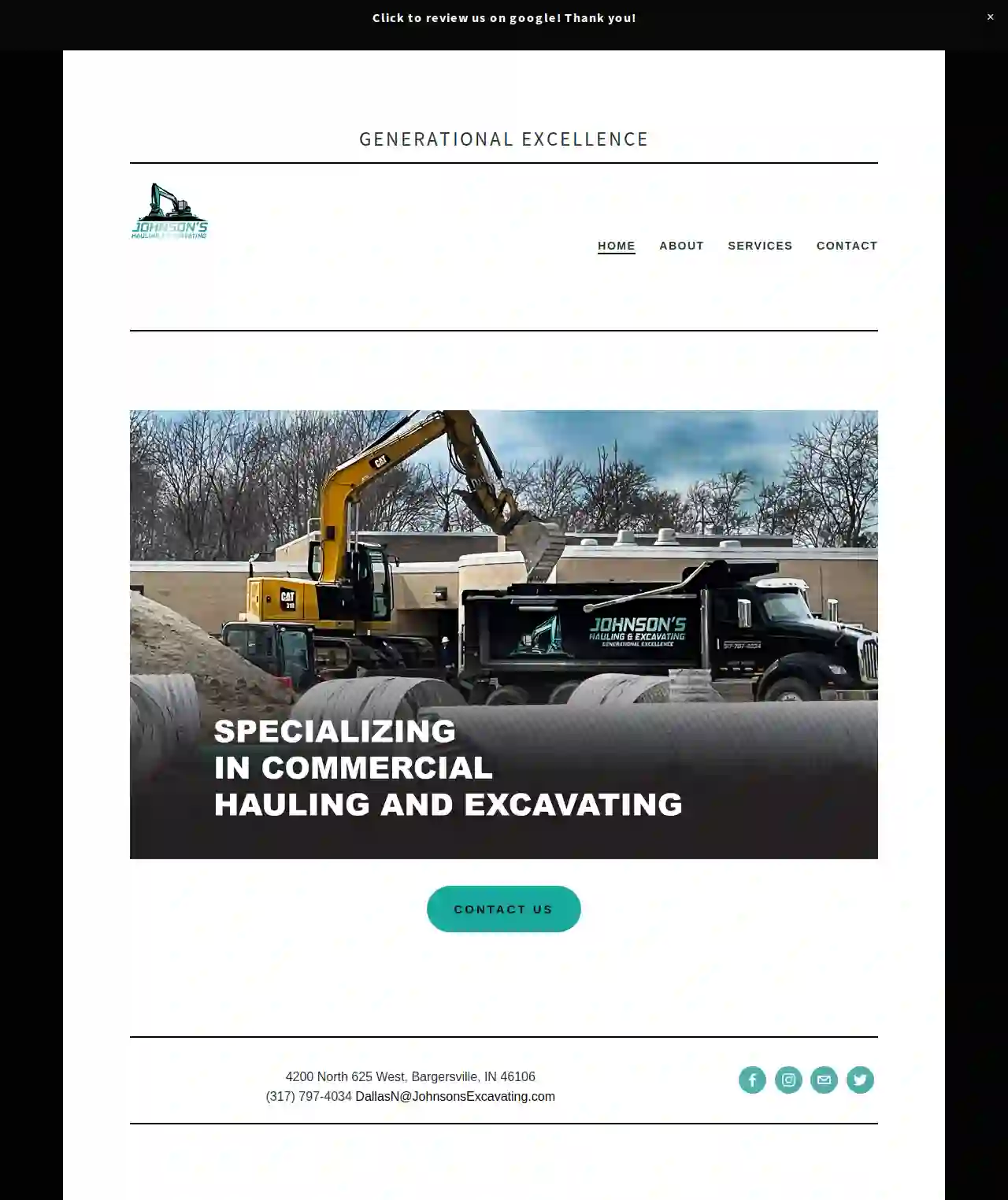
Johnson's Hauling & Excavating
57 reviews4200 North 625 West, Bargersville, 46106, USGenerational Excellence Dallas and Amanda Johnson, the dynamic duo behind Johnson's Hauling & Excavating, have transformed a childhood passion into a thriving business that has been a cornerstone of the Indianapolis community for over 30 years. Dallas N. Johnson Born and raised in the world of excavating, Dallas honed his skills early on, mastering the art of operating heavy machinery even before most kids learn to ride a bike. His dedication and expertise culminated in 2006 when he officially became a co-owner of the family business, continuing the legacy that exists today. Amanda Johnson When Dallas's father decided to retire in 2019, Amanda stepped into her new role as co-owner of the company. Together, they have propelled Johnson's Hauling & Excavating to new heights, expanding their services and team to better serve their valued customers. At Johnson's Hauling & Excavating, quality and efficiency are not just buzzwords but the guiding principles that shape every project. Whether it's a small-scale excavation or a large commercial endeavor, they are committed to delivering unparalleled service and timely results that exceed expectations. For all your commercial project needs, reach out to us at [email protected] and experience the Johnson's Hauling & Excavating difference firsthand.
- Services
- Why Us?
- Our Team
- Gallery
Get Quote
Excavation DHS
2035 Butte House Rd, Yuba City, 95993, USBegin Your Excavation Journey With DHS Explore the possibilities with Heavy Handyman Division. Contact us to receive a personalized excavation quote that meets your project's specific requirements, completely free of charge. Company Overview: At Heavy Handyman Division, we have been providing top-notch excavation and site preparation services since our inception. Our team is equipped with the knowledge and machinery to handle all your site work needs efficiently. Serving a wide area including Sacramento, Chico, Roseville, and many other locations within a 50 to 60-mile radius from Yuba City, California, we are your dedicated excavation specialists. We offer precise and environmentally conscious excavation services for both residential and commercial projects. Leveraging our expertise, we ensure your project is completed on time and within budget, exceeding your expectations.
- Services
- Why Us?
- Testimonials
- Gallery
Get Quote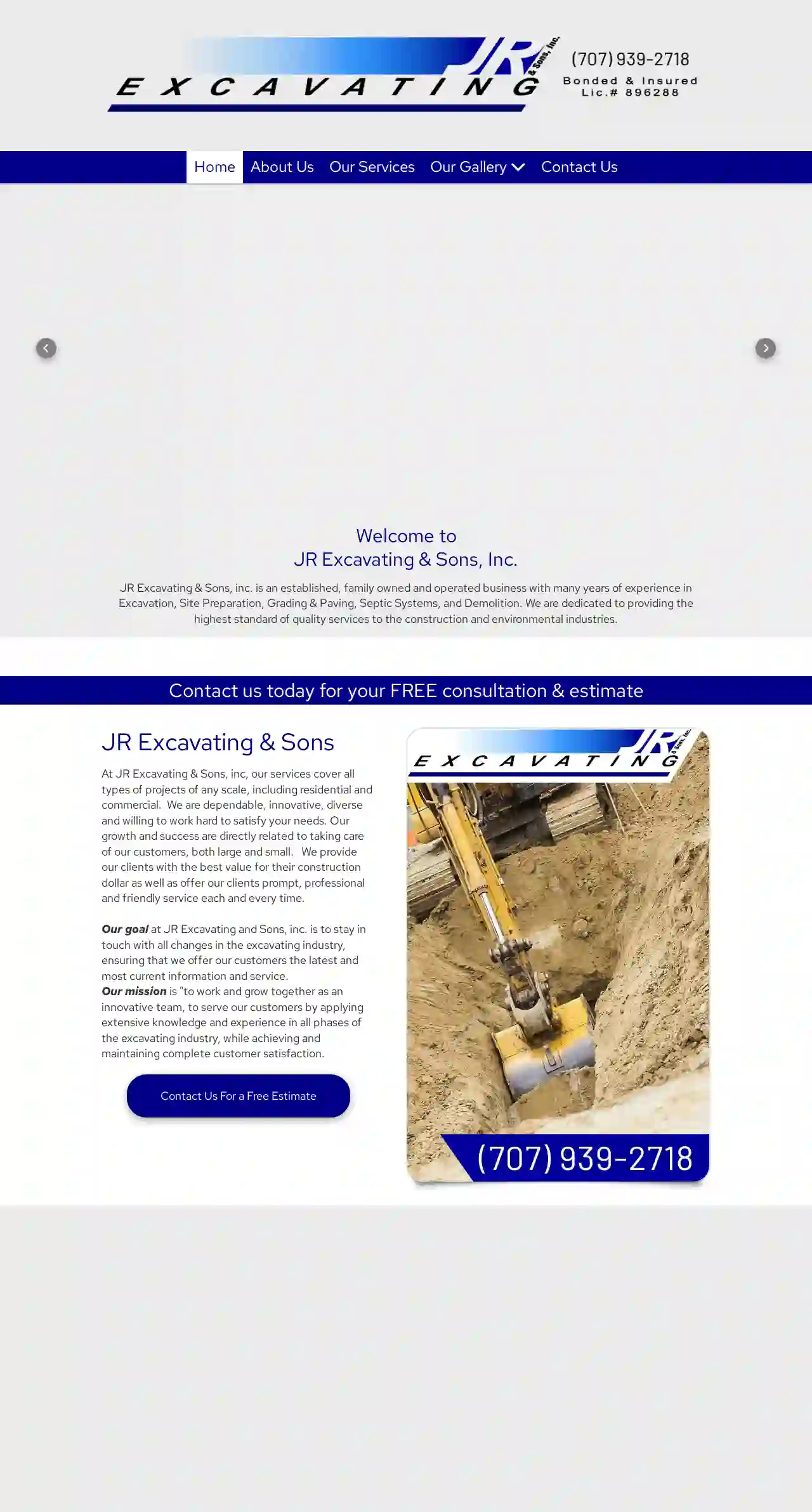
J R Excavating & Sons Inc
54 reviews120 Meadowlark Lane, Sonoma, 95476, USJR Excavating & Sons, Inc. is a family-owned and operated business with years of experience in excavation, site preparation, grading & paving, septic systems, and demolition. We are dedicated to providing the highest standard of quality services to the construction and environmental industries. Our services cover all types of projects of any scale, including residential and commercial. We are dependable, innovative, diverse and willing to work hard to satisfy your needs. Our growth and success are directly related to taking care of our customers, both large and small. We provide our clients with the best value for their construction dollar as well as offer our clients prompt, professional and friendly service each and every time. Our goal at JR Excavating and Sons, inc. is to stay in touch with all changes in the excavating industry, ensuring that we offer our customers the latest and most current information and service. Our mission is "to work and grow together as an innovative team, to serve our customers by applying extensive knowledge and experience in all phases of the excavating industry, while achieving and maintaining complete customer satisfaction."
- Services
- Why Us?
- Our Team
- Gallery
Get Quote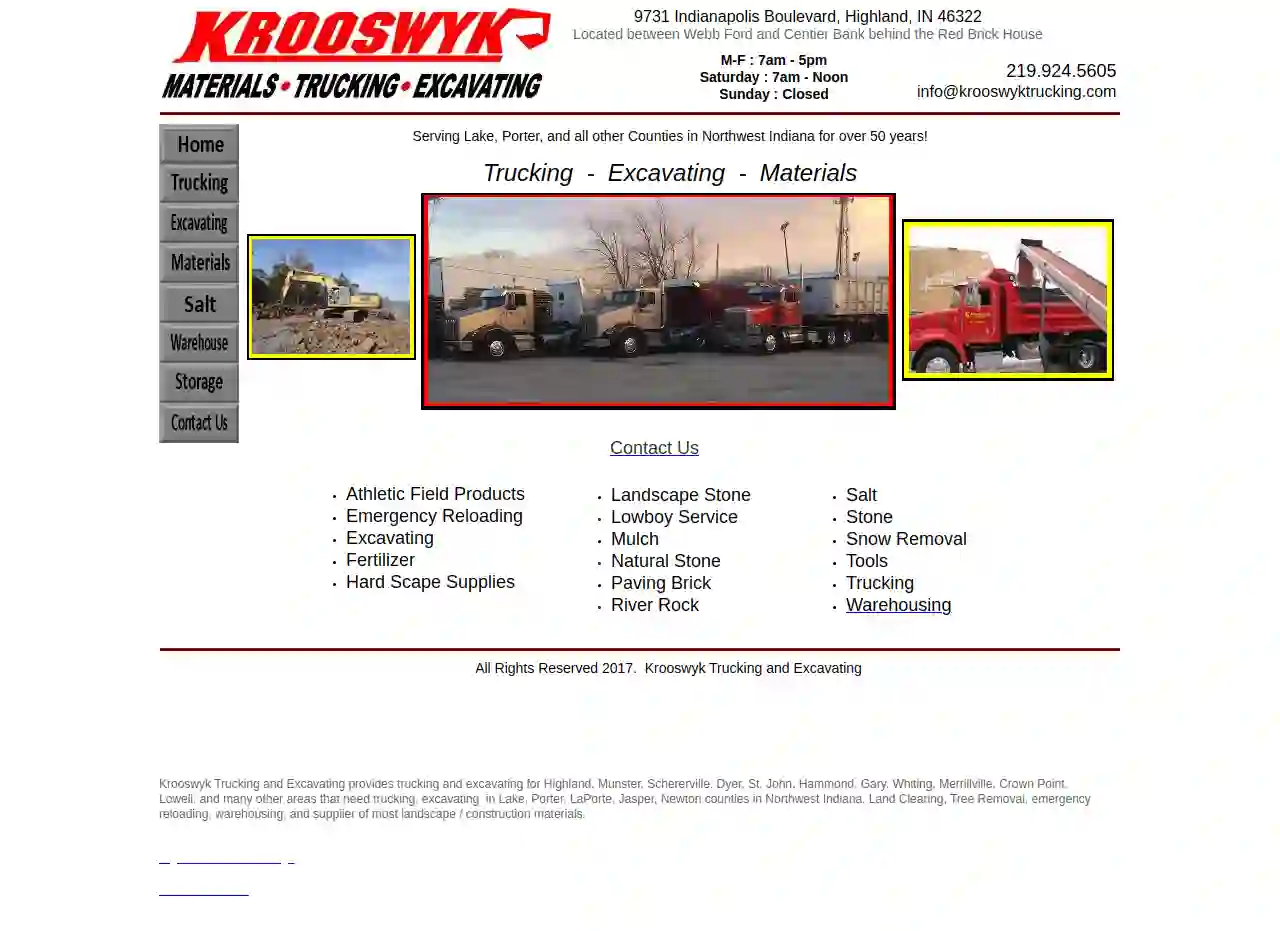
Krooswyk Trucking & Excavating
58 reviews9731 Indianapolis Boulevard, Highland, 46322, USAbout Krooswyk Trucking and Excavating Krooswyk Trucking and Excavating has been serving Northwest Indiana for over 50 years, providing reliable and efficient trucking and excavating services to a wide range of clients. We are committed to delivering exceptional service and exceeding expectations on every project. Our team of experienced professionals is dedicated to providing safe, timely, and cost-effective solutions for all your trucking and excavating needs. We are proud to serve the communities of Highland, Munster, Schererville, Dyer, St. John, Hammond, Gary, Whiting, Merrillville, Crown Point, Lowell, and many other areas in Lake, Porter, LaPorte, Jasper, and Newton counties. Our services include: Trucking: We offer a variety of trucking services, including dump truck, box trailer, flatbed, and lowboy hauling. We can handle a wide range of materials, including snow, salt, black dirt, topsoil, sand, gravel, stone, and more. Excavating: Our experienced operators and state-of-the-art equipment can handle any excavating project, from small residential jobs to large commercial projects. We offer services such as land clearing, tree removal, grading, and site preparation. Materials: We are a supplier of a wide range of landscape and construction materials, including athletic field products, fertilizer, hard scape supplies, landscape stone, mulch, natural stone, paving brick, river rock, salt, stone, tools, topsoil, and more. We are committed to providing our customers with the highest level of service and quality. We are licensed, insured, and ready to meet all your trucking and excavating needs. Contact us today for a free estimate!
- Services
- Why Us?
- Gallery
Get Quote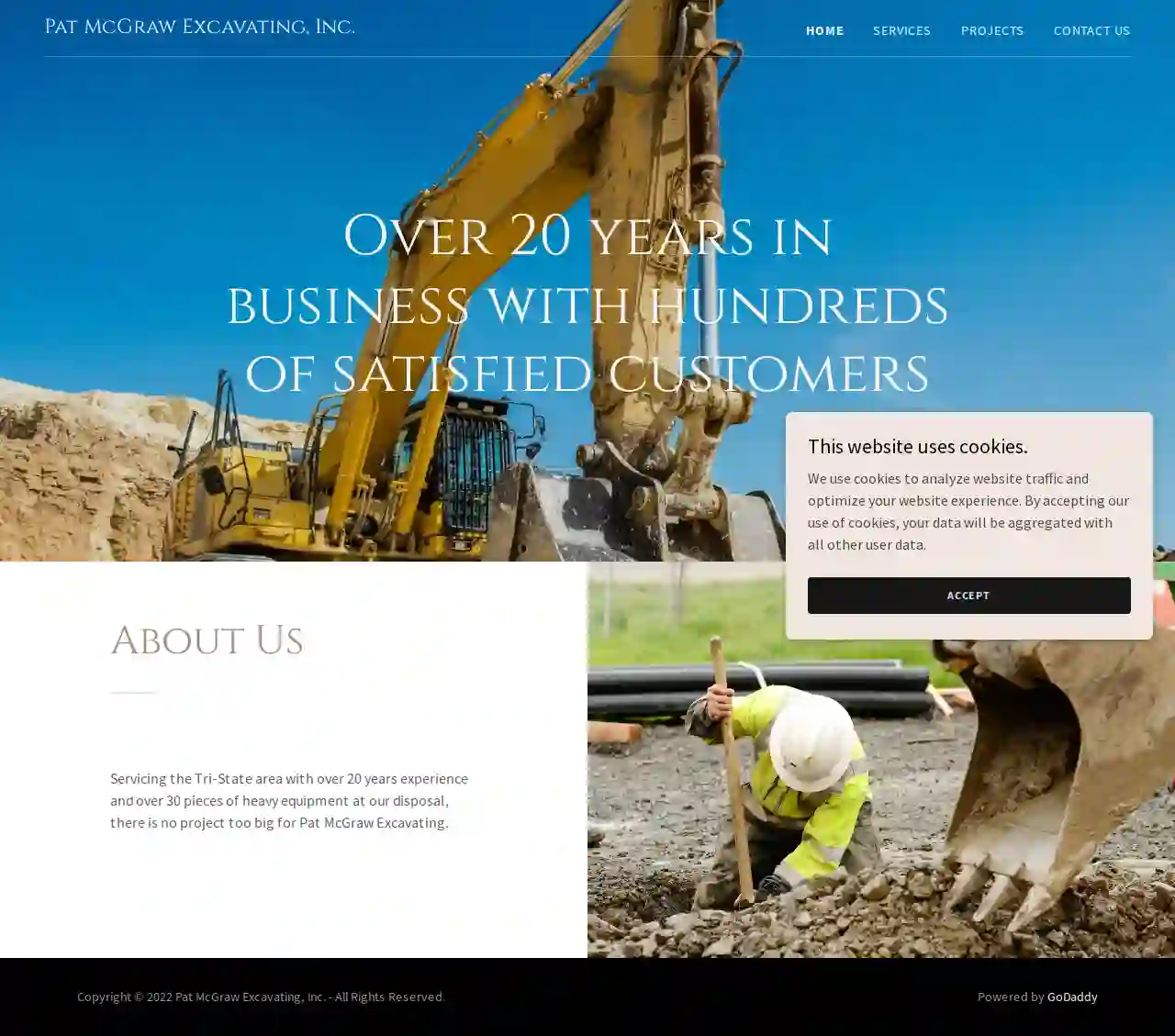
Pat Mc Graw Excavating
Aurora, USAbout Us With over 20 years in business and hundreds of satisfied customers, Pat McGraw Excavating is your trusted partner for all your excavation needs. We service the Tri-State area with over 30 pieces of heavy equipment at our disposal, ensuring no project is too big for us.
- Services
- Why Us?
- Gallery
Get Quote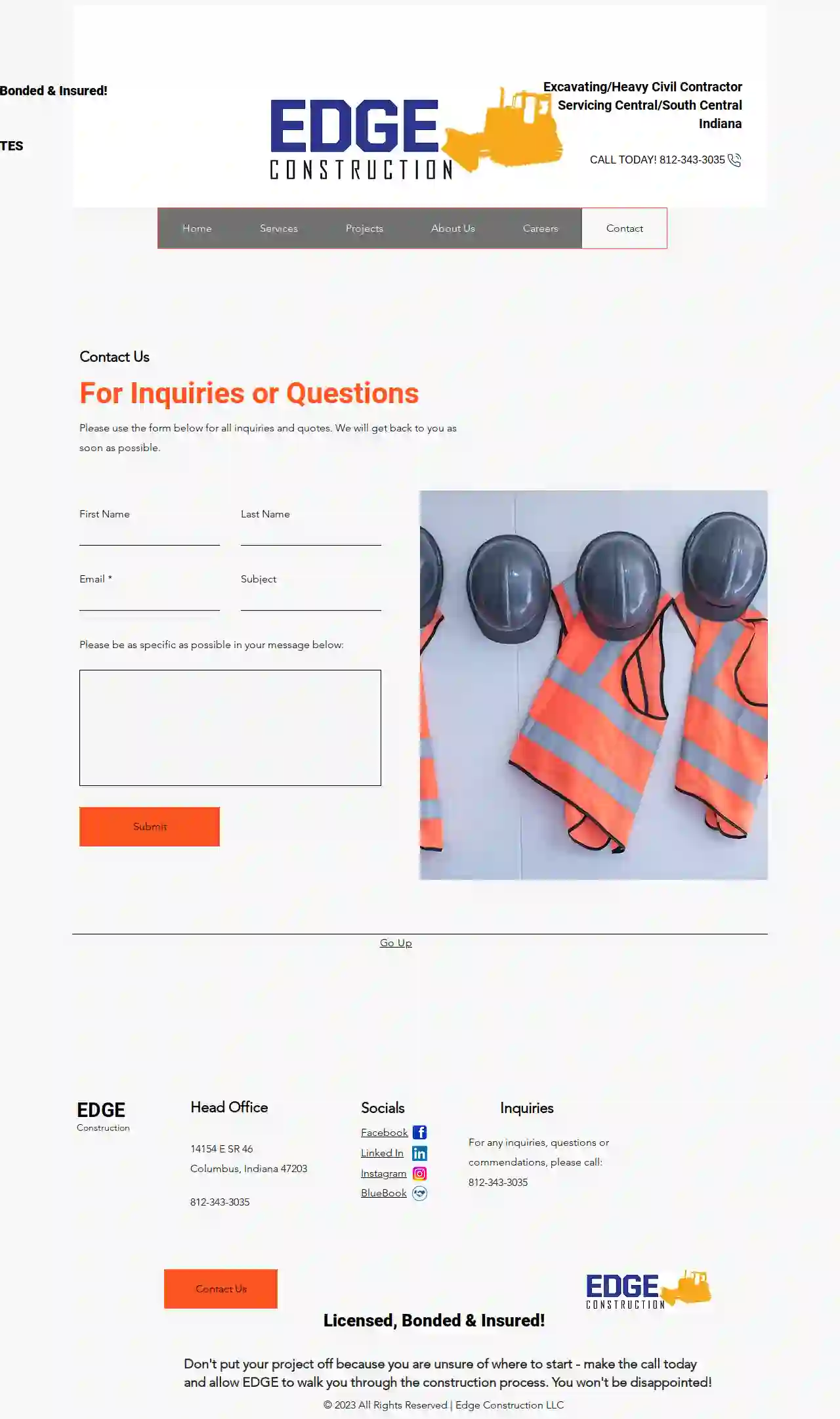
Edge Construction
14154 E SR 46, Columbus, 47203, USEDGE Construction: Your Trusted Partner for Excavating and Heavy Civil Projects in Central and South Central Indiana EDGE Construction is a licensed, bonded, and insured excavating and heavy civil contractor serving Central and South Central Indiana. We are committed to providing our clients with high-quality construction services at competitive prices. Our team of experienced professionals is dedicated to delivering projects on time and within budget. We understand that your project is important to you, and we are committed to working with you every step of the way to ensure your satisfaction. Whether you need a new driveway, a foundation for your dream home, or a large-scale commercial project, EDGE Construction has the expertise and resources to get the job done right. We offer a wide range of services, including: - Excavating - Grading - Site preparation - Utility installation - Concrete work - And more! We are proud to serve the communities of Central and South Central Indiana. We are committed to providing our clients with the highest level of service and quality. Contact us today for a free quote!
- Services
- Why Us?
- Gallery
Get Quote
Over 22,076+ Excavation Contractors on our directory
Our excavation providers operate in Madison and surrounding areas!
ExcavationHQ has curated and vetted Top Excavation Contractors in Madison. Find a trustworthy pro today.
Frequently Asked Questions About Demolition Contractors
- Experience: Look for companies with a proven track record and years of experience in the demolition industry.
- Licensing and Insurance: Ensure the contractor is properly licensed to operate in your area and carries adequate insurance to protect you from liability.
- Safety Record: Inquire about their safety protocols and accident history. A reputable contractor prioritizes safety.
- References and Reviews: Ask for references from past clients and check online reviews to gauge their reputation and customer satisfaction.
- Professionalism: Choose a company that communicates clearly, provides detailed estimates, and has a courteous and responsive team.
- Enclosure: Sealing off the asbestos-containing material to prevent fiber release.
- Encapsulation: Coating the asbestos-containing material with a sealant to bind the fibers.
- Removal: Carefully removing the asbestos-containing material and disposing of it safely.
- Dust Suppression: Use water spraying, misting systems, or other dust suppression techniques to control airborne particles.
- Noise Barriers: Erect temporary noise barriers around the demolition site to reduce noise transmission to nearby properties.
- Work Schedule: Schedule noisy demolition activities during permitted hours to minimize disturbance to neighbors.
- Communication: Keep neighbors informed about the demolition schedule and any potential disruptions.
Can I do demolition myself?
How do I find a reputable demolition contractor?
What are the different methods of asbestos abatement?
How can I minimize the dust and noise from demolition?
Can I do demolition myself?
How do I find a reputable demolition contractor?
- Experience: Look for companies with a proven track record and years of experience in the demolition industry.
- Licensing and Insurance: Ensure the contractor is properly licensed to operate in your area and carries adequate insurance to protect you from liability.
- Safety Record: Inquire about their safety protocols and accident history. A reputable contractor prioritizes safety.
- References and Reviews: Ask for references from past clients and check online reviews to gauge their reputation and customer satisfaction.
- Professionalism: Choose a company that communicates clearly, provides detailed estimates, and has a courteous and responsive team.
What are the different methods of asbestos abatement?
- Enclosure: Sealing off the asbestos-containing material to prevent fiber release.
- Encapsulation: Coating the asbestos-containing material with a sealant to bind the fibers.
- Removal: Carefully removing the asbestos-containing material and disposing of it safely.
How can I minimize the dust and noise from demolition?
- Dust Suppression: Use water spraying, misting systems, or other dust suppression techniques to control airborne particles.
- Noise Barriers: Erect temporary noise barriers around the demolition site to reduce noise transmission to nearby properties.
- Work Schedule: Schedule noisy demolition activities during permitted hours to minimize disturbance to neighbors.
- Communication: Keep neighbors informed about the demolition schedule and any potential disruptions.